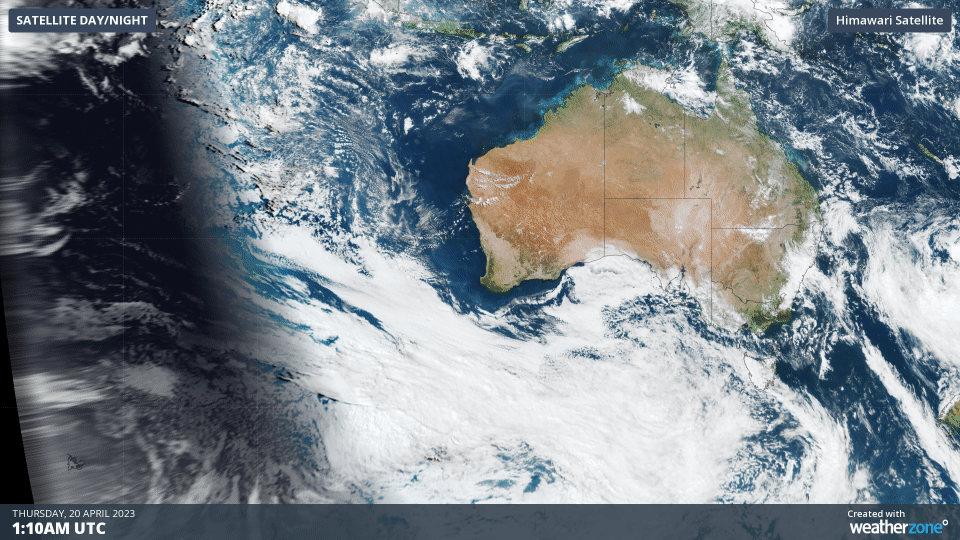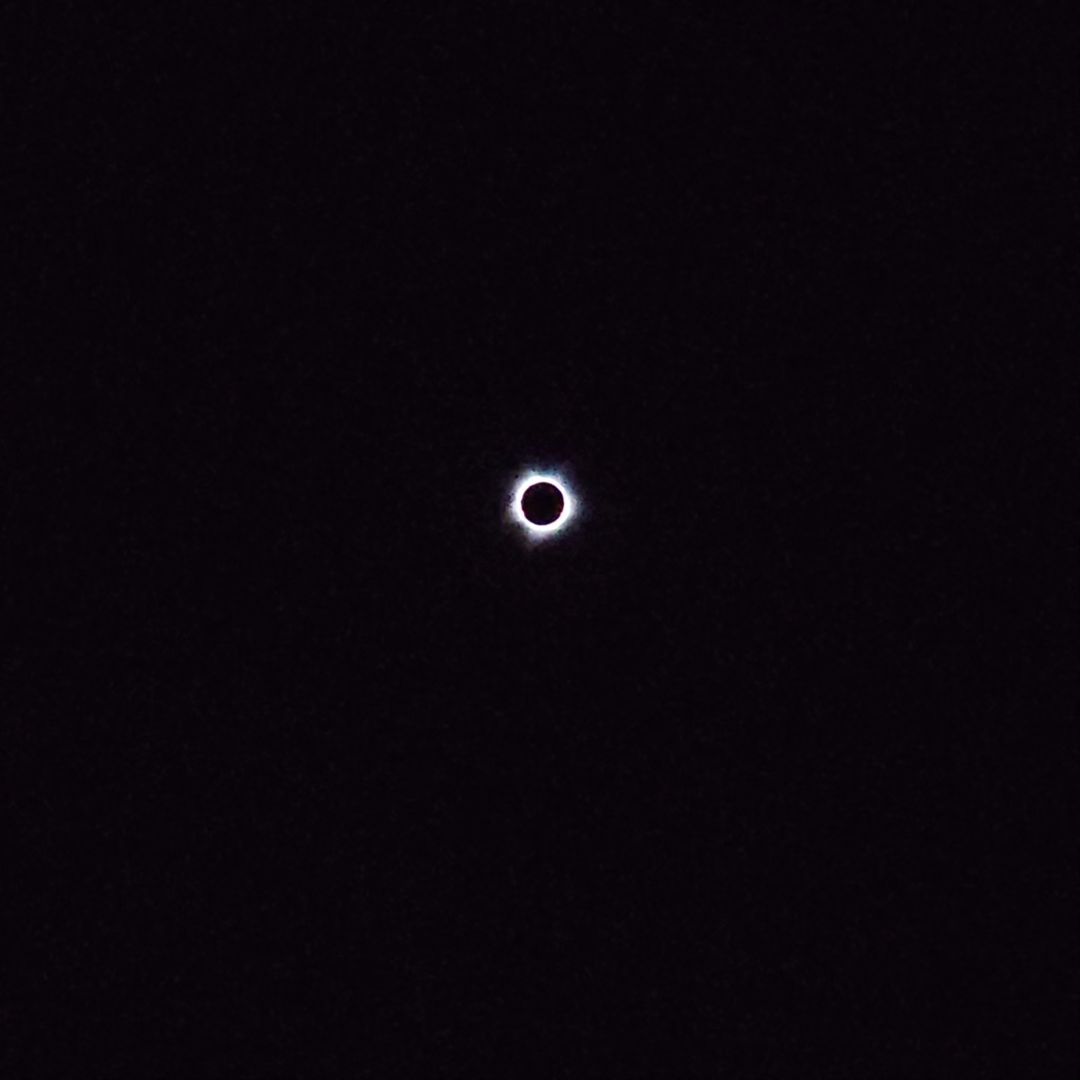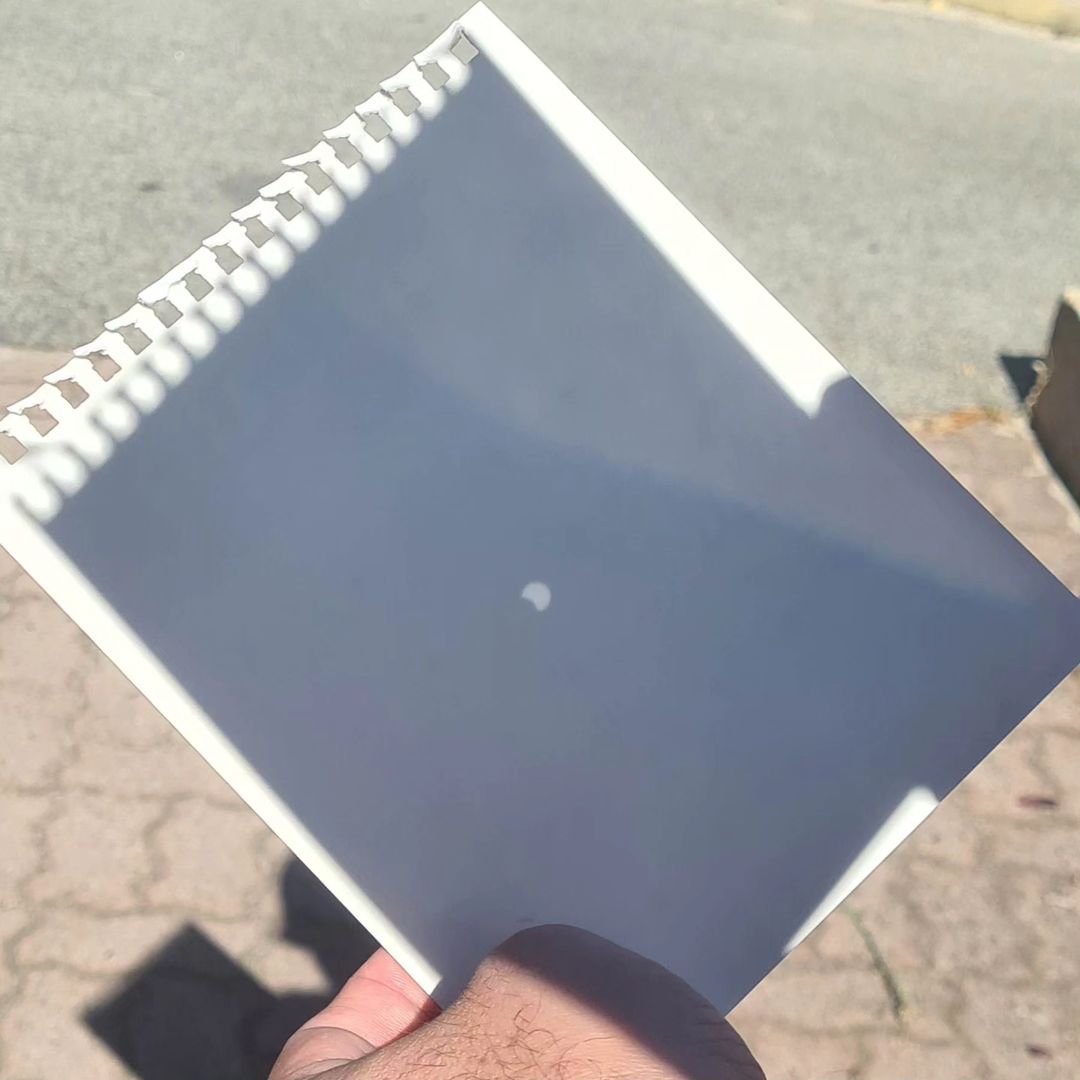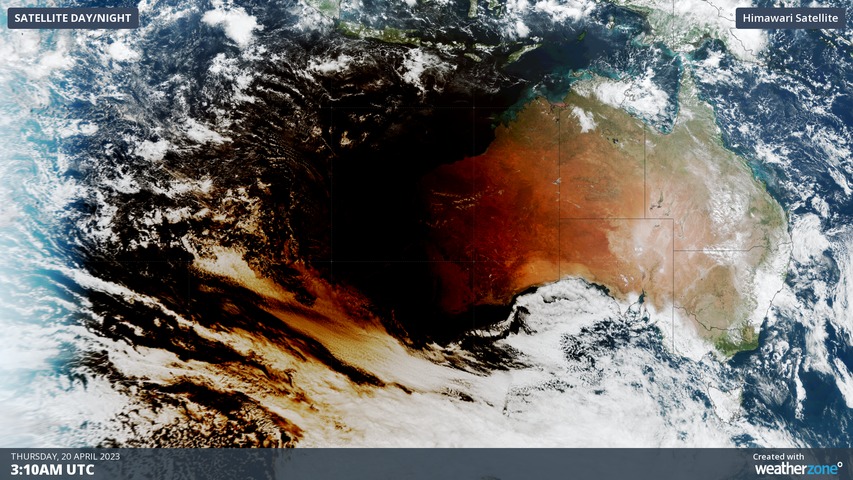A satellite just captured the shadow of the Moon darting across the Indian Ocean and glancing northwestern Australia during today’s total solar eclipse.
More than 20,000 people converged on Exmouth in the far northwest corner of WA on Thursday to witness a total solar eclipse. This rare spectacle occurs when the moon passes between Earth and the Sun, causing the Moon to briefly cast a shadow on the Earth’s surface.
Exmouth and the surrounding Ningaloo Coast region was the only place on the Australian mainland to witness Thursday’s solar eclipse in its entirety. Every other part of the country only saw a partial eclipse, where the moon only covered a portion of the sun.
But while the view of the eclipse from Earth was limited to a thin sliver of land and ocean, the Himawari-9 satellite, sitting 36,000 km above Earth’s surface, captured an impressive top-down view of the phenomenon for all to see.
The video below shows the shadow of the Moon passing across Earth’s surface on Thursday, initially moving over the Indian Ocean before skimming WA and then continuing towards the Timor Sea and Indonesia.

Impressively, the temperature dropped by several degrees during the darknes of the eclipse. Carnarvon Airport cooled by 3.4ºC between 10:23am and 11:30am local time.
Below are a few more images of the event captured by the Weatherzone community in WA.

Image: Safety first in Wonthella, WA. Source: @impactn.massage.clinic / Instagram

Image: Total solar eclipse as seen from Barrow Island, WA. Source: @thomas__fry / Instagram

Image: View of Thursday’s partial solar eclipse through a pinhole projector, from Perth. Source: @dardsagainsthumanity / Instagram






